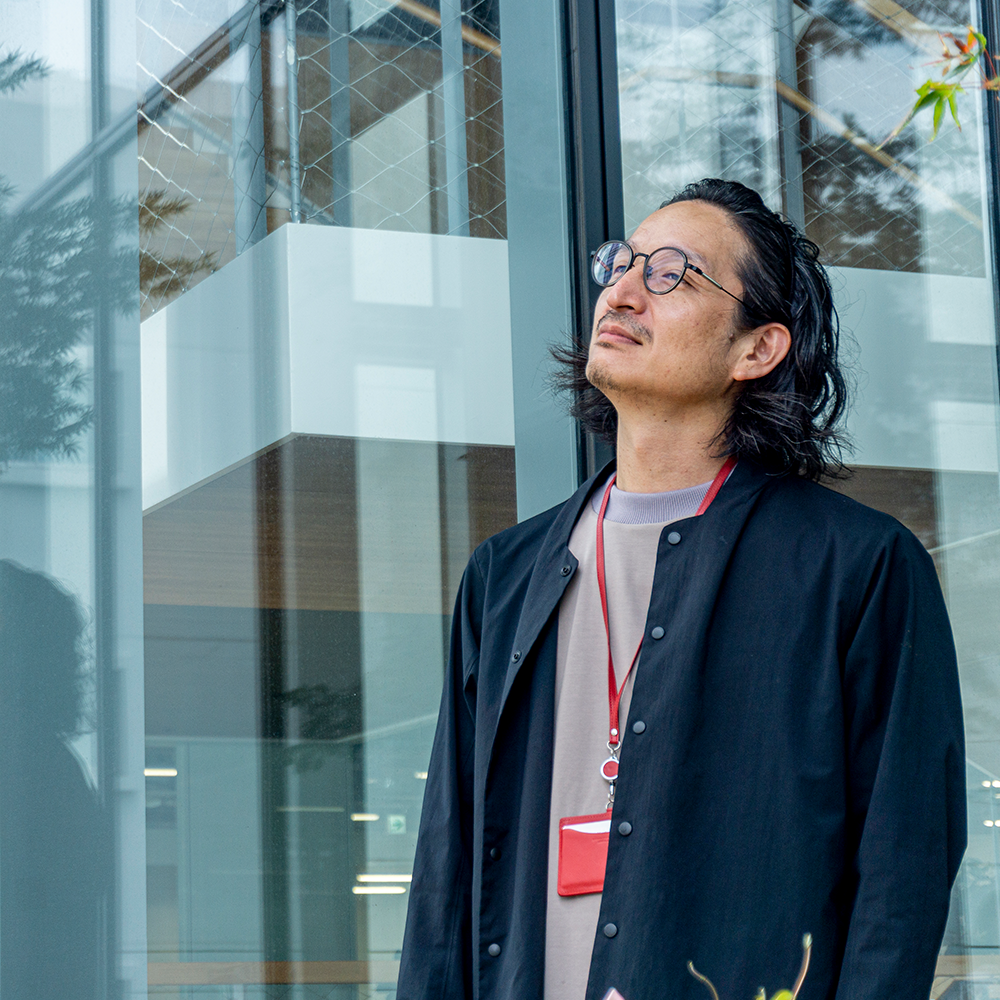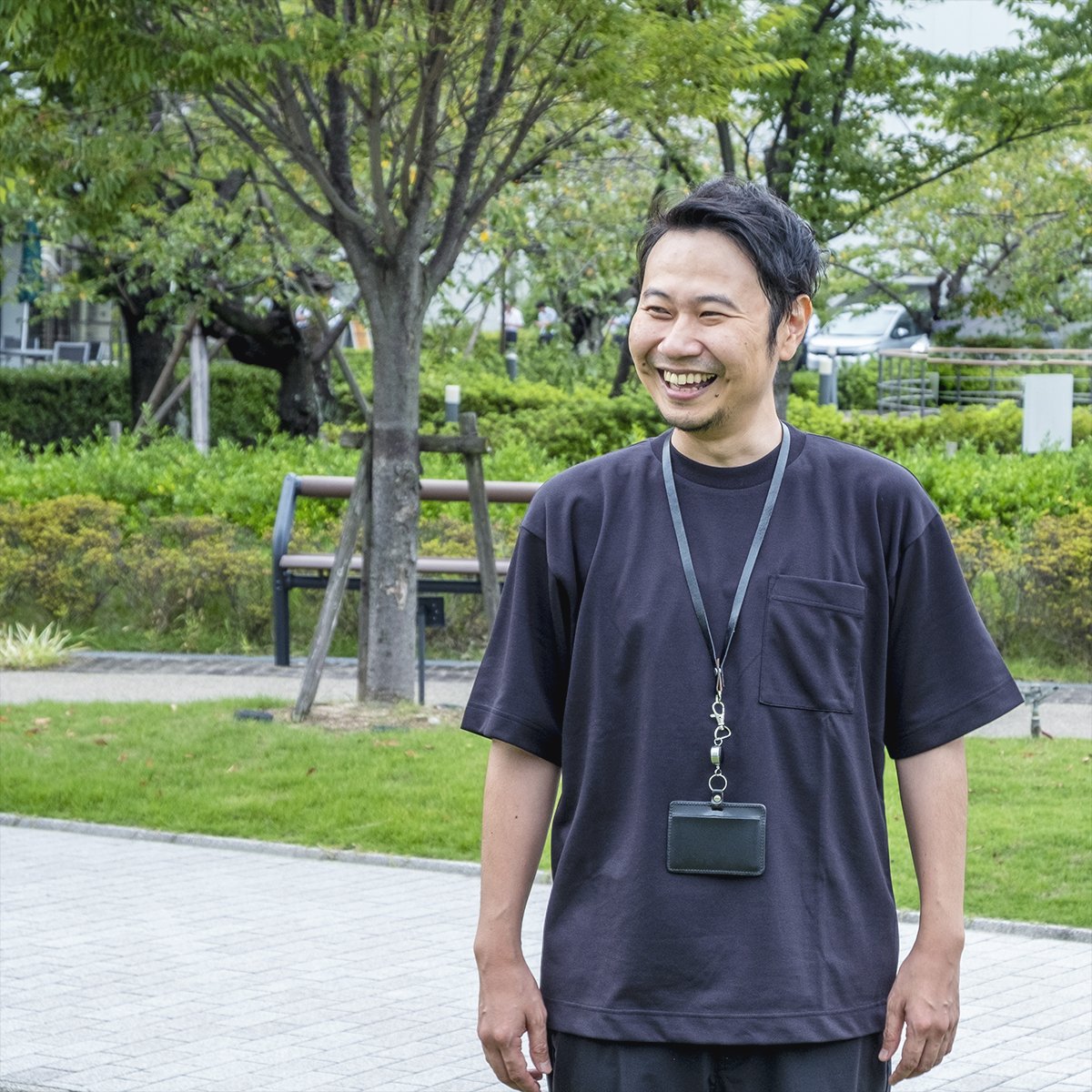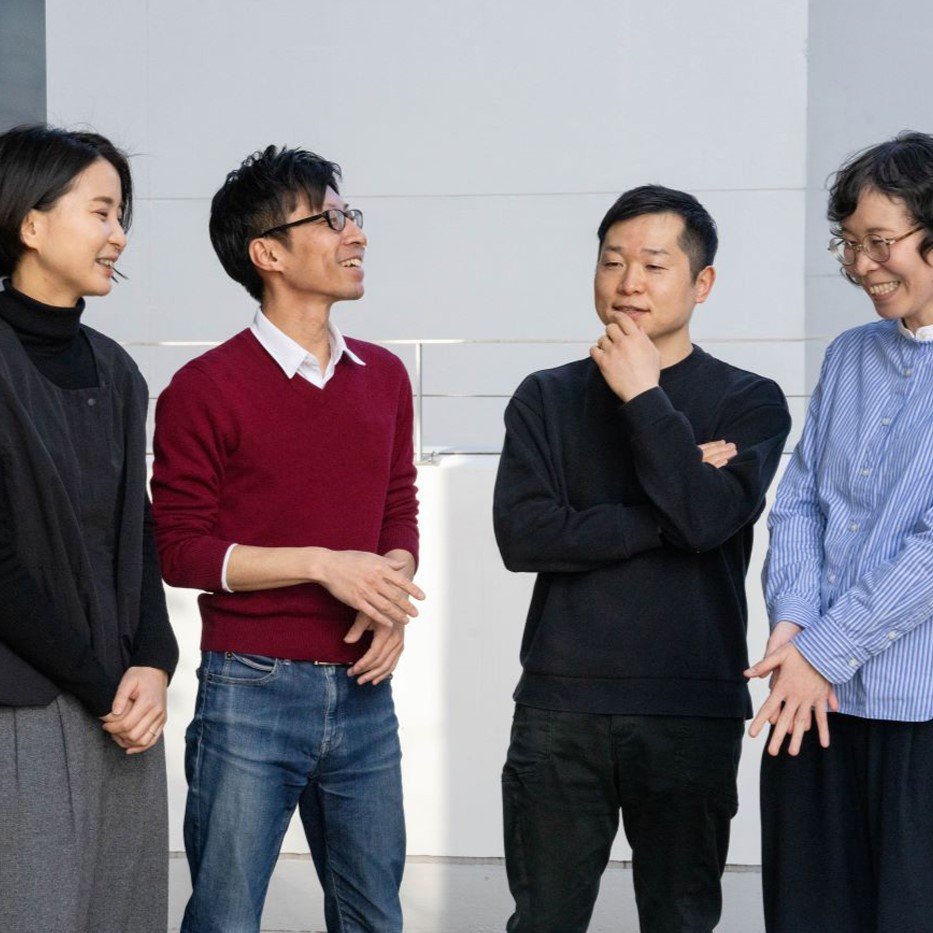Design Division Web Development2025.03.24
We reflected on the renewal of the DENSO Design Division's website and shared our experiences through the challenges and growth we encountered along the way.

Identifying Issues Through Real Voices
Matsumura:
The impetus for the DENSO Design Division website renewal was the aging state of our previous site. It's often said that the average lifespan of a website is about five years, but ours had been up for over seven. I proposed that it was time for a change. We began by examining how users perceived the site and whether the messages we wanted to convey as a design division were being clearly communicated--both through internal and external research.
As we spoke with members within the division, it became apparent that each person had a different interpretation of what defines the essence of our team. That led us to realize the importance of taking a careful, reflective look at the question: "What is DENSO Design?"--to reaffirm our identity.
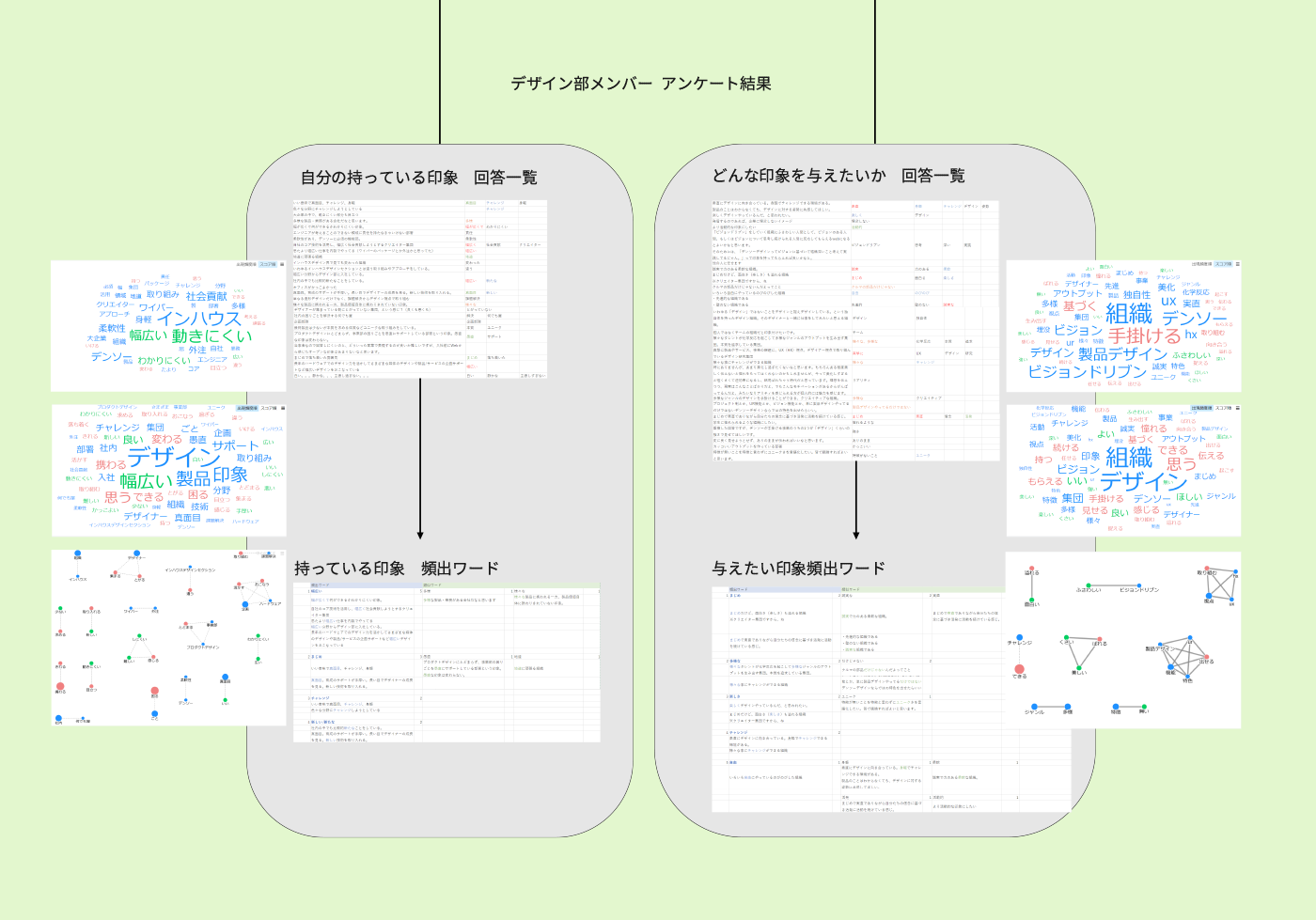
Yoshida:
When I was a student, I looked at the DENSO Design Division's website, but it left me feeling unclear and frustrated--I couldn't really tell what kind of company it was. For example, even when I wanted to get a sense of the office environment, all I could find were photos of shelves and not much else.
I joined the company right when COVID-19 began to spread, so all pre-employment events were canceled. Until my first day, I had no idea what the workplace would actually be like, and I felt quite anxious. I even worried--based on my own assumptions--that everyone might be really stiff and formal. It was intimidating.
There was a section called Works on the site back then, but many of the featured designs were for in-vehicle or B2B products, which I wasn't very familiar with. I could see they looked visually impressive, but still ended up thinking, "What exactly is this?" I couldn't imagine what kind of work I'd actually be doing.
That sense of dissatisfaction I had at the time became a source of energy and motivation as I approached the redesign.
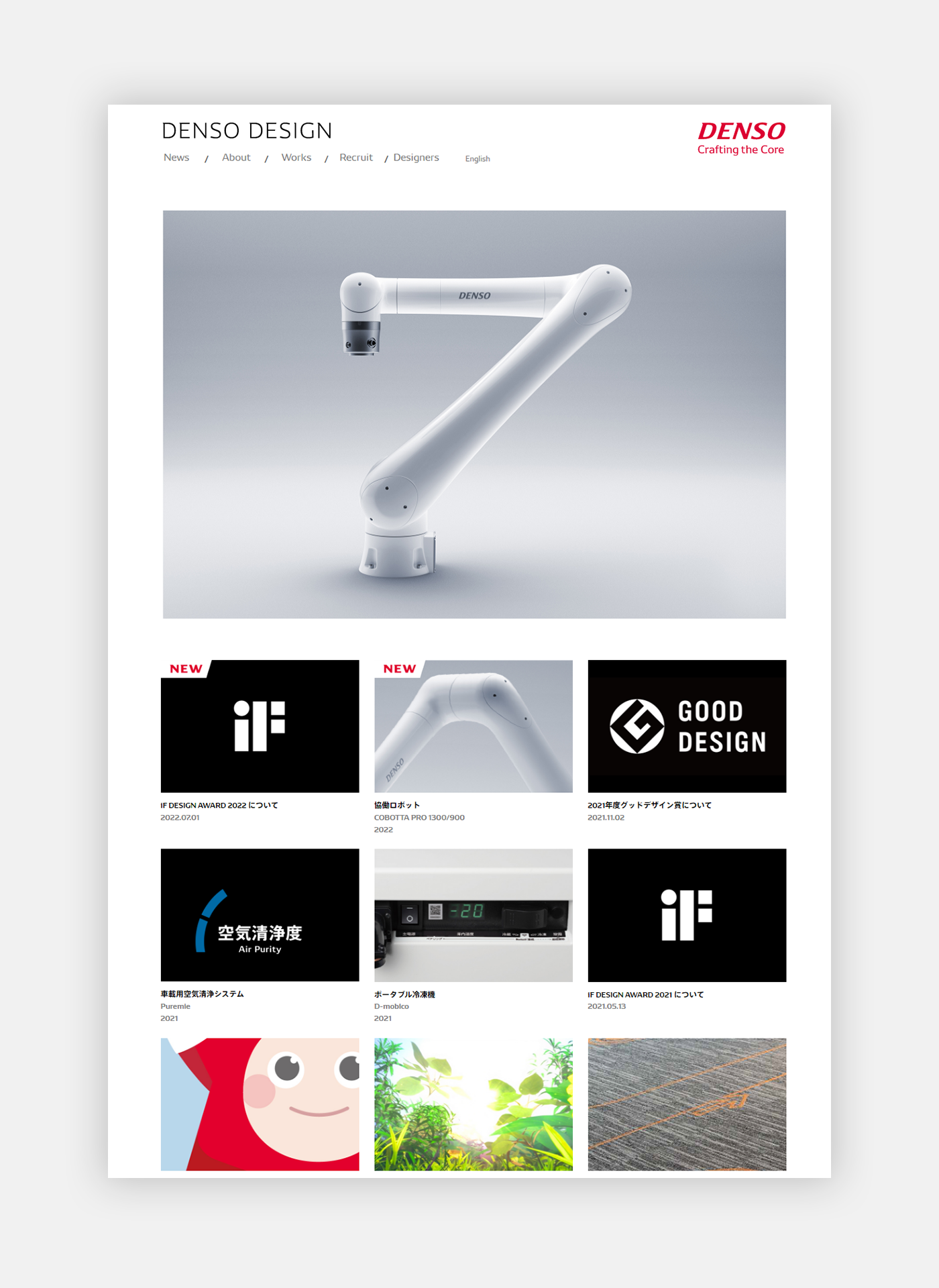
Creating Content Focused on "People"
Yoshida:
Back when I was job hunting, I really wanted to learn more about the people behind the work. But the old website lacked content that conveyed any sense of human presence. While each product was credited with the name of its designer, there was no way to get a sense of who they were. I felt that was a missed opportunity, so this time, I wanted to highlight the people behind the designs.
That's why we decided to feature every member of the Design Division. There were some opposing opinions, but in the end, I'm glad we went through with it. For those who didn't want to show their face, we asked them to provide their own alternative image. Since we gave everyone freedom to choose their photo, we focused on maintaining a sense of unity by using distinctive circular cropping to create visual balance.
Matsumura:
We also had discussions about whether we should unify the tone and style of the photos. But ultimately, we decided not to force consistency. Our designers each have different skills and areas of expertise, and many pursue their own themes through research and design. We wanted to reflect that spirit of freedom and individuality.
At the same time, to avoid the page feeling too disjointed, we maintained a certain level of cohesion by standardizing the layout format. This helped strike a balance between individuality and visual unity.
Yoshida:
I was really happy when some students who participated in our workshop said, "The impression we got from the website matched the impression we had when talking with our mentors during the workshop." I thought, This is exactly what we were aiming for! That single comment truly meant a lot to me--it felt validating and encouraging.
Matsumura:
One of our key goals was to give people a sense of the DENSO Design Division's atmosphere even before they joined the company, so hearing that kind of feedback makes me really happy.
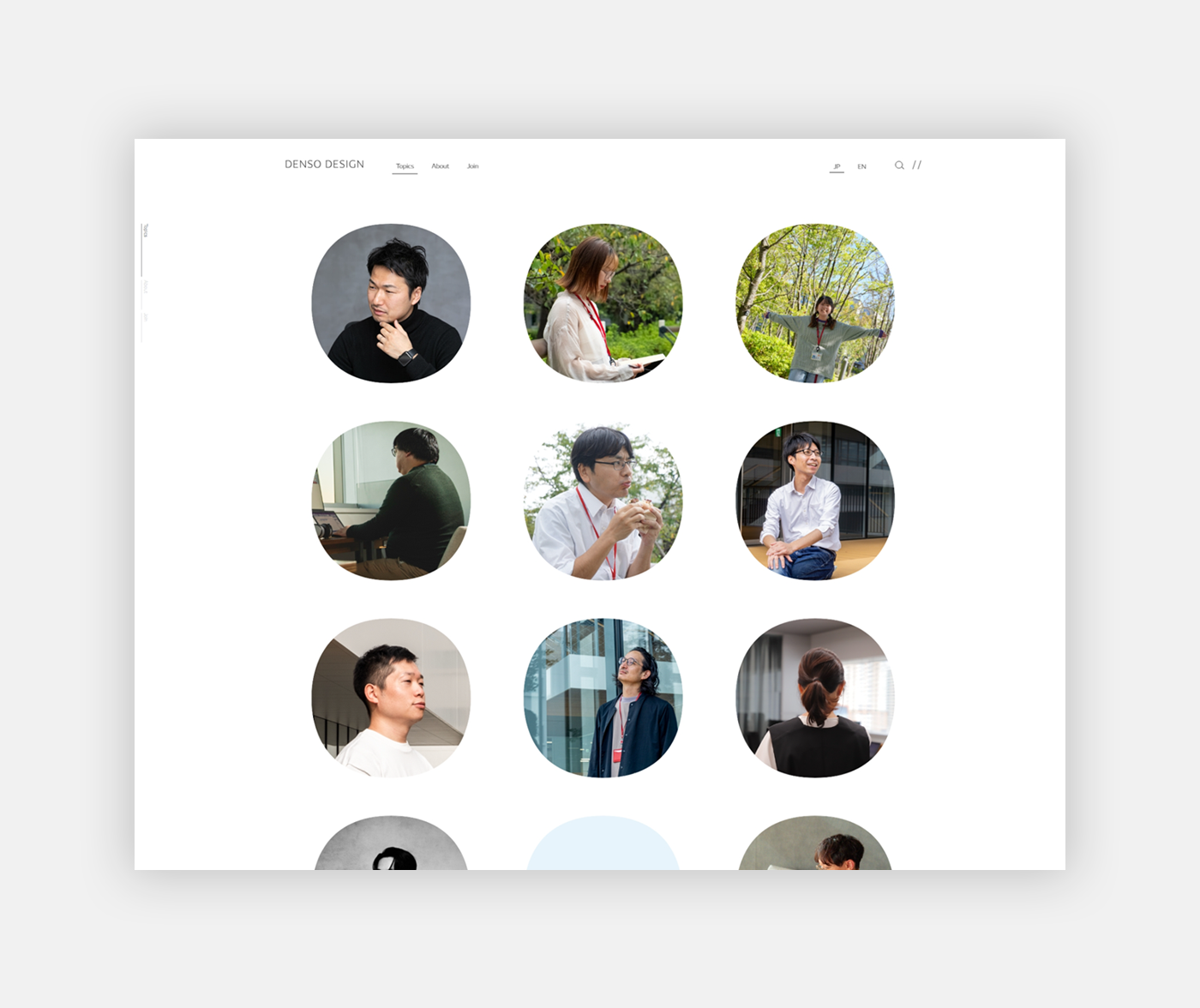
Approachable Researchers
Yoshida:
When we discussed what defines the essence of the DENSO Design Division, one of the first keywords suggested by management was "a design research collective." We then conducted interviews with each team to gauge how much they resonated with that phrase. What we found was that each team had slightly different interpretations.
Teams that produce more research-oriented outputs responded positively to the term. On the other hand, some teams didn't necessarily associate their work with "research," but still shared a similar mindset--quietly and steadily figuring out how to move things forward.
To preserve the nuances of the words we gathered, we chose not to force everything into a single concept phrase. Instead, we summarized the common threads in short expressions like "thinking from first principles" and "working honestly and steadily," and presented them side by side.
Matsumura:
It was quite a challenge figuring out how to bring everything together, but Yoshida took the lead and actively facilitated opportunities for feedback. She made great use of our monthly "Open Lab" events, where members of the Design Division gather to share updates, and encouraged everyone to contribute their opinions.
Yoshida:
One of the phrases that came up during the Open Lab sessions was "approachable researchers," and that really resonated with me. I felt it captured our spirit best. Rather than presenting design as a finished product, viewing it as a form of research feels more accurate--something that doesn't end in a single iteration, but continues to evolve while sharing progress along the way.
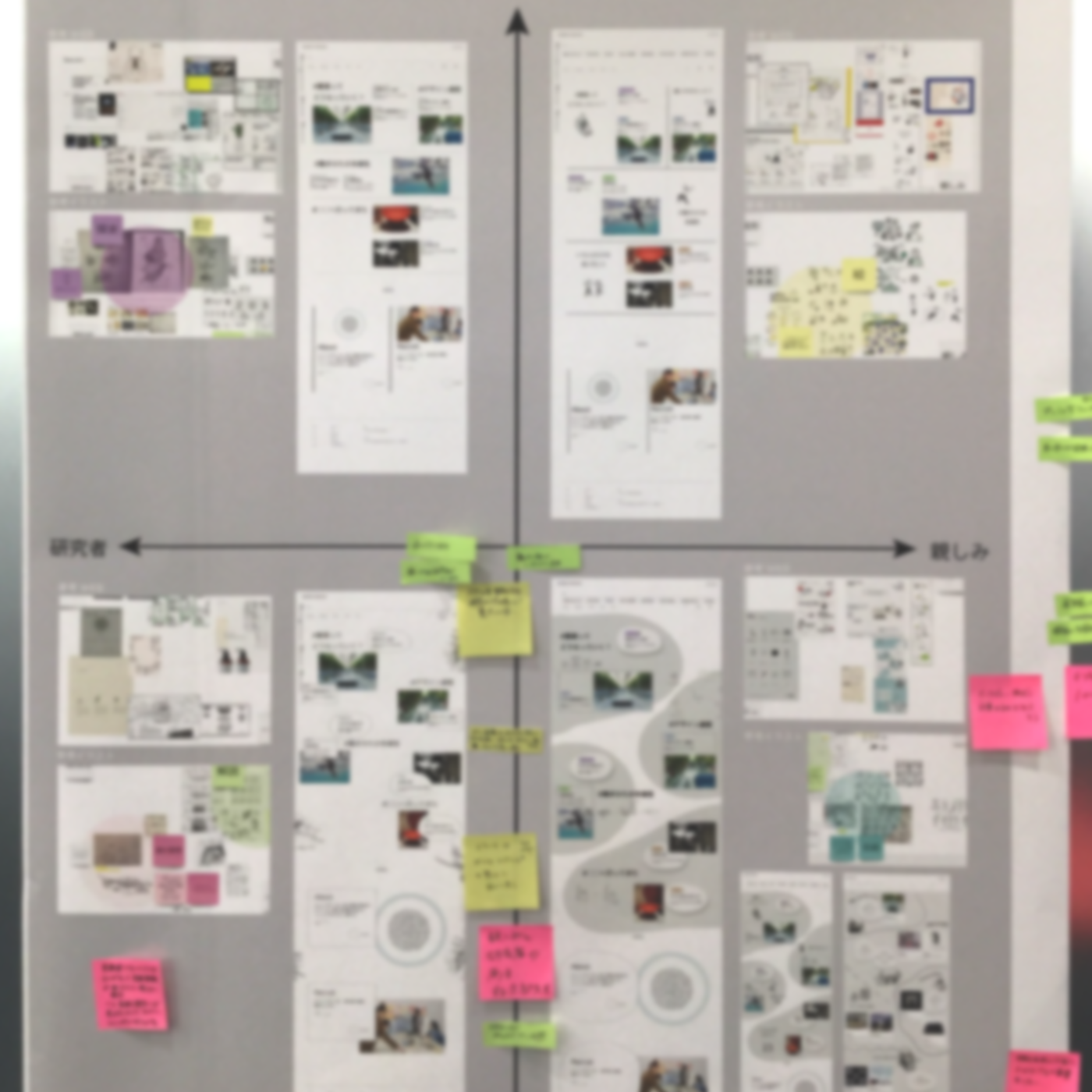
Matsumura:
We also discussed the idea of showcasing the trial-and-error process of design itself.
Yoshida:
Visually, I think the sketches used on the top page of the finished website contribute to a sense of approachability. All of those sketches were actually drawn by DENSO designers during their design process.
At one point, we considered hiring an external illustrator, but in the end, we felt it was more authentic to show things as they really are--like giving viewers a peek into a researcher's rough notes. That's why we decided to use the original sketches just as they were.
Attention to Detail
Yoshida:
Earlier, I mentioned the circular cropping of profile photos, but on the top page, where articles from various categories are displayed randomly, we used label shapes and image cropping styles to visually differentiate the categories.
Among those, designing the speech bubble shape for the "Chat" category was particularly challenging. We wanted users to recognize the category based on the label shape, while also ensuring that the text would fit properly--so we had to find a form that could meet all those requirements.
That sensitivity to detail carries over into our other UI and product design work as well. For example, when designing logos, I pay close attention to keeping the number of control points low to maintain clean, precise shapes.
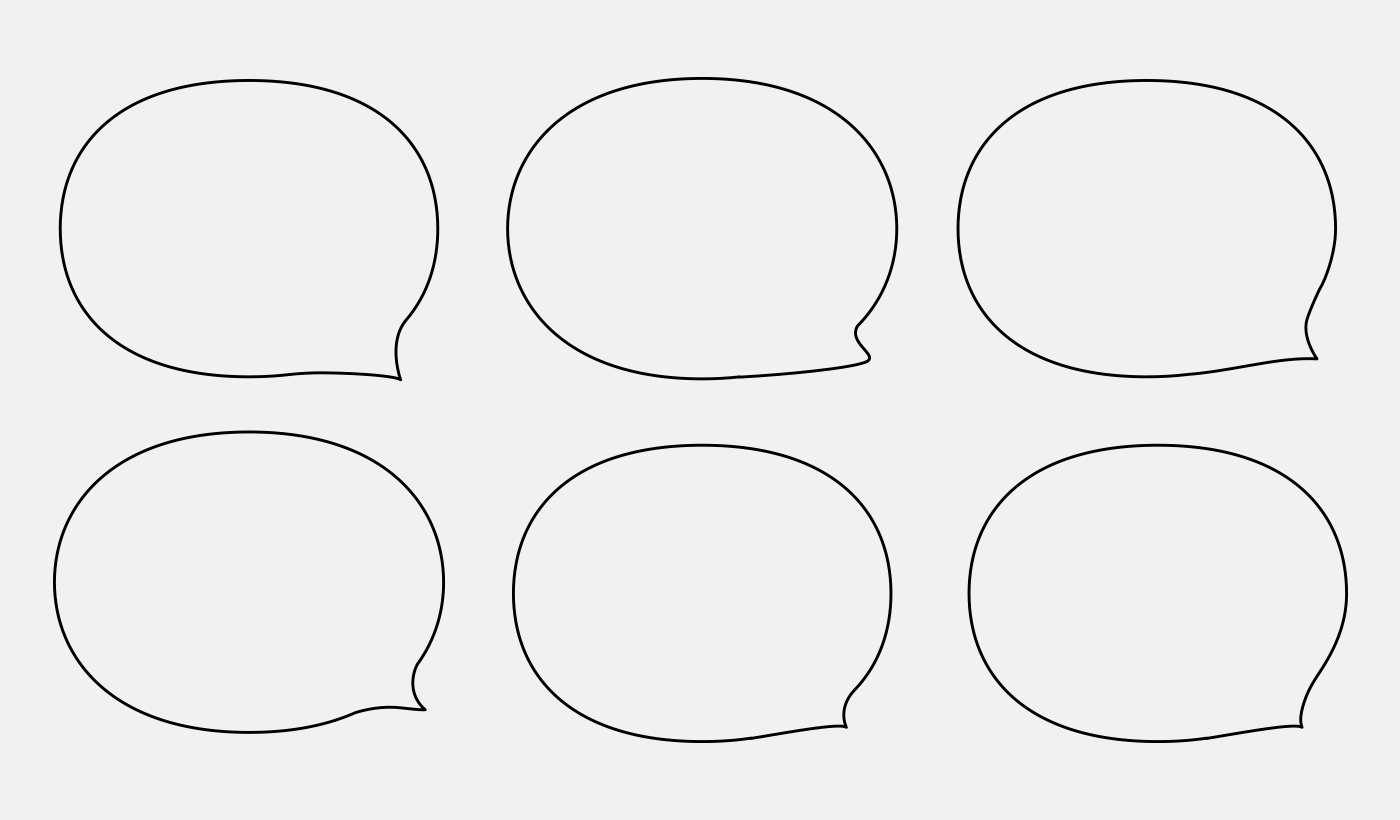
Although I didn't have much prior experience with writing, I found the process of developing our tone of voice to be incredibly educational. I realized that tone and manner of expression are crucial in conveying our unique identity.
This attention to tone is also reflected in the hashtags associated with each article--they serve as a powerful way to communicate the atmosphere of the Design Division.
What stood out most in the final stages was adjusting the layout down to the pixel. I remember having detailed back-and-forth discussions, like asking to add just one pixel of space between a title and the body text. I had never been that precise before, but once we tried it, the difference was clear. It really sharpened my eye for detail.
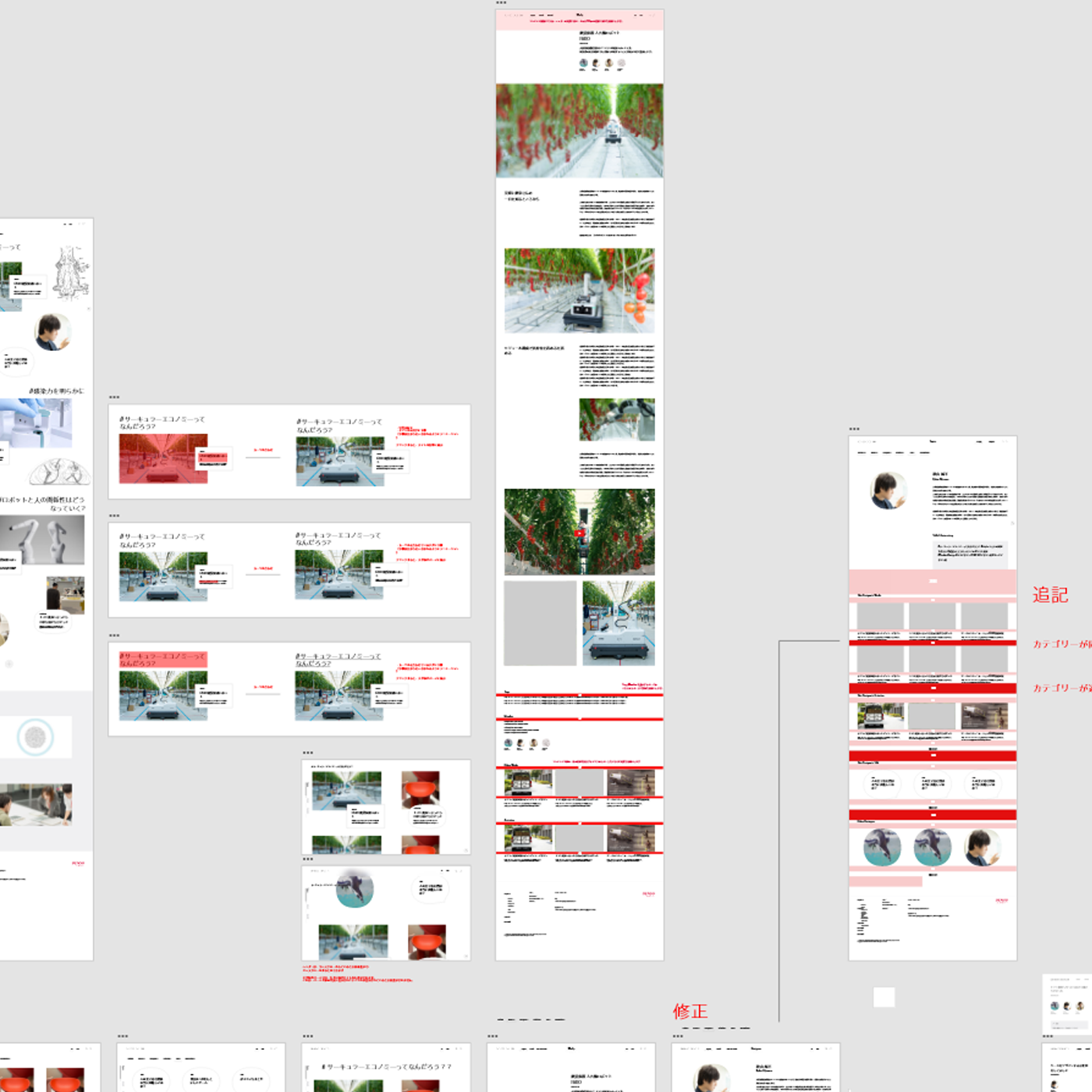
Content That Reflects Us as We Are
Yoshida:
In our effort to convey an authentic atmosphere, we initially considered publishing raw audio recordings of our conversations. But since most of us aren't used to speaking for public audiences, and because maintaining that kind of content over time would be resource-intensive, we had to rethink the idea.
As an alternative, we decided to publish internal chat conversations just as they were. Looking back, I think that turned out even better. Compared to audio recordings made under the pressure of knowing they'd be shared online, the internal chats captured a more natural, unfiltered way of communicating.
Matsumura:
Publishing chat logs as-is was a bold move, and at first, I was a bit concerned it might come across as too insular or just a collection of inside jokes. But analytics showed that readers were genuinely engaged, and some students even said it was the chat content that inspired them to apply for our workshop. One of our hidden hits has been the article about automotive industry jargon--it continues to draw a significant number of new visitors.

We Took Ownership of Analytics, Too
Sato:
I joined the DENSO Design Division website renewal project starting with the server selection. Since I hadn't previously had the opportunity to learn about internal rules related to web operations or general web knowledge, it was overwhelming at first--but there was no choice but to dive in. Thankfully, a reliable colleague from the relevant department supported me through the internal procedures, and we managed to complete the site launch successfully.
But launching the site wasn't the end--the real challenge began with its operation. As we created an annual plan to move forward, I was pleasantly surprised by how many team members volunteered to be editors when we reached out to each group. It really spoke to the spirit of the Design Division. Even though everyone was busy, they found interesting content for our chat section and supported contributors in writing articles. Thanks to that collective effort, we've been able to publish a wide range of content.
By the way, I serve as editor-in-chief--but I still get embarrassed when people call me that. Still, this role has given me many opportunities to learn and grow. I'm committed to continuing to improve the website as a member of the Design Division.
Getting to the point where we could run analytics after the renewal was another major challenge. I had seen how hard Yoshida was working, and I knew that if we couldn't make analytics work, I wouldn't be able to stay confident in my role. Once we got the analytics up and running, it gave us so many new insights and clear next steps. I realized just how essential analytics are to effective website management.
Matsumura:
Analytics are a crucial piece of the web puzzle. I'd like us to continue sharing the data with team members regularly so that everyone can feel the impact and stay engaged as we move forward. Looking forward to working with you--Editor-in-Chief!
Yoshida:
I think it's really impressive that we're doing everything in-house. It's rare to hear about a design division handling everything--from analytics to writing web articles--entirely on their own. That "let's do it all ourselves" mindset truly feels like a defining characteristic of the DENSO Design Division.

Tags
Member
Creative Direction: Tasuku Matsumura
Project Management: Hiroyuki Yamamoto
Project Lead: Ayako Yoshida
Art Direction: Ayako Yoshida, Tasuku Matsumura
UI Design: Ayako Yoshida
Edit: Maiko Sato
Web Analytics: Maiko Sato
Support: DENSO DESIGN
Other WorksAll Works

